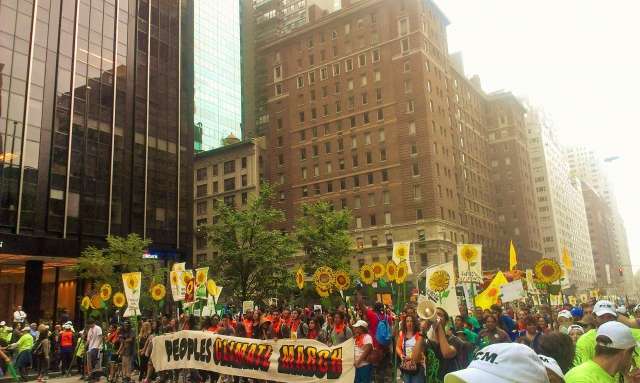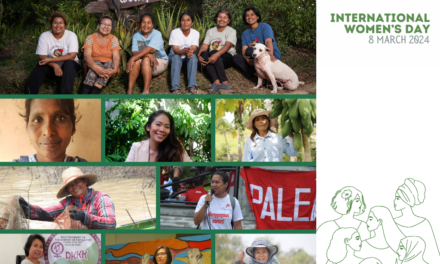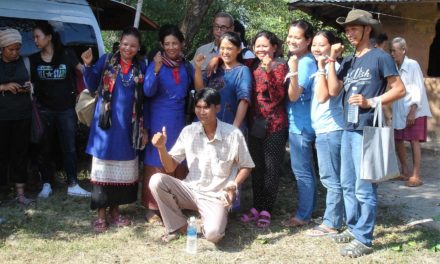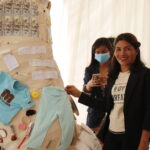By Mary Ann Manahan
September 21, New York—More than 300,000 people from the climate justice movements—frontline communities, indigenous peoples, labor, families, students, farmers, anti-corporate campaigners, youth, peace and justice activists, scientists, interfaith, the LGBTI, and more—from the global North and South converged at Columbus Circle to demand climate justice, reclaim power and stop climate profiteering. Organized by many movements led by the Climate Justice Alliance, New York Environmental Justice Alliance and UPROSE, the People’s Climate March was perhaps the largest mobilization around climate justice in recent years. It was not only a celebration of resistance struggles, but more importantly, the march highlighted the role of low-income and communities of color that are on the front lines of the climate crisis. People in these communities, especially from the global South, are the most affected by storms, droughts, floods and other extreme weather events, and they are also at the forefront of change.
There was a very strong contingent from the youth and indigenous movements, too. One indigenous youth leader addressing a crowd of other young people said, “you must not save us, you have to stand with us.” He pointed out that indigenous communities have often been treated as victims rather than as agents of change. Amid the diversity of slogans and demands— from food justice to save our seas and water, the reverberating political message was clear: “The time to address climate change is here and now.”
Climate justice was the main call of the people that flooded the streets of New York. Climate justice is about the struggle over land, forest, water, culture, water, food sovereignty, collective and social rights. Justice is the heart of any solution to the deepening climate crisis. It supports climate solutions that are found in the knowledge, practices, and ways of life of those who are struggling to defend and protect their lives, livelihoods and environment. Climate justice is especially about the urgent need for genuine, systemic change and transformation—one that challenges the roots of the problem; capitalism, overconsumption and overproduction.
The march was a testament to the growing power of a movement to reclaim power in response to the corporate capture of the climate agenda. It’s a movement that offers various solutions to climate change—from a just transition away from big, dirty energy toward living local and resilient economies that work for the people and planet, to systemic solutions that are based on food and water justice, energy democracy, and climate jobs. It also demands accountability and historical responsibility on the part of the biggest polluters, who must shoulder the greatest share of global emissions cuts rather than passing it on to those who are most vulnerable and most affected by the climate crisis.
The big question now is how to sustain this successful mobilization and transform it into an inclusive, participatory and powerful platform and a real force to reckon with. What is certain is that climate justice is an idea, a practice and a movement whose time has come.










